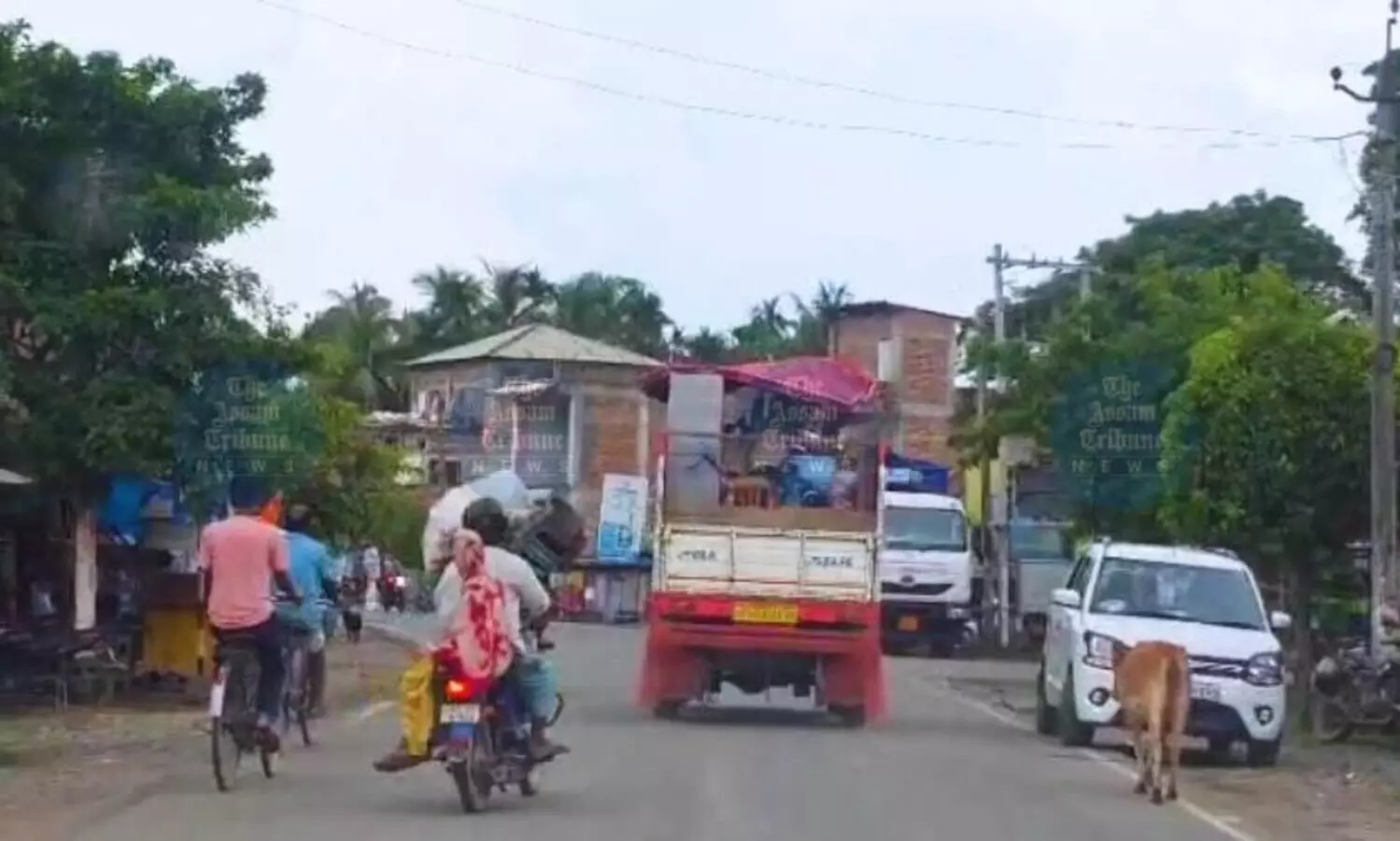Encroachers begin exodus as eviction looms in Golaghat's Urimaghat
Some suspected encroachers reportedly possess voter IDs from places such as Nagaon, Dhing, Laharighat & Sonitpur;

Jorhat, July 21: Following Chief Minister Himanta Biswa Sarma’s recent call for an eviction drive in Uriamghat, land survey operations have been actively underway in Golaghat district, particularly in areas along the Assam-Nagaland border.
In the wake of these administrative moves, several suspected encroachers have begun vacating the area, packing up their belongings under makeshift roofs of tarpaulin and bamboo.
In Kherbari, situated on the inter-state border, people are voluntarily dismantling their homes and leaving with household items loaded into vehicles. According to local sources, the exodus began late Saturday night.
Former All Assam Students’ Union (AASU) leader Shivasish Sarma said the Chief Minister’s announcement had prompted settlers to start leaving.
“Some of them had earlier settled here after being evicted from Gorukhuti. Their departure shows how a significant portion of our land had been encroached upon,” he said.
Areas like Chilanijan, Dayalpur, Pithaghat, and Kherbari — under the Sorupathar sub-division — have reportedly seen large-scale encroachment over the years, with thousands of bighas of land occupied by migrant settlers.
Interestingly, some of these individuals reportedly possess voter IDs from districts such as Nagaon, Dhing, Laharighat, and Sonitpur — though many now cast their votes in Sorupathar.
Ananta Gogoi, a member of the All Assam Tai Ahom Students’ Union, claimed many illegal settlers had already left for places like Nagaon and Dhing, while others were seen leaving by boat across the Assam-Nagaland border.
“Still, many remain. I urge the authorities to take strict action. These encroachments have even led to language-based tensions in the region,” he said.
Earlier, on July 15, Sarma had warned of a long-term demographic shift in areas such as Uriamghat, Titabor, and Mariani if unchecked settlement patterns continued in districts like Golaghat and Jorhat.
He had also noted the legal challenges in tackling such encroachments, as many alleged settlers possess valid documents under the 1971 cut-off set by the Assam Accord — making them eligible to vote.

